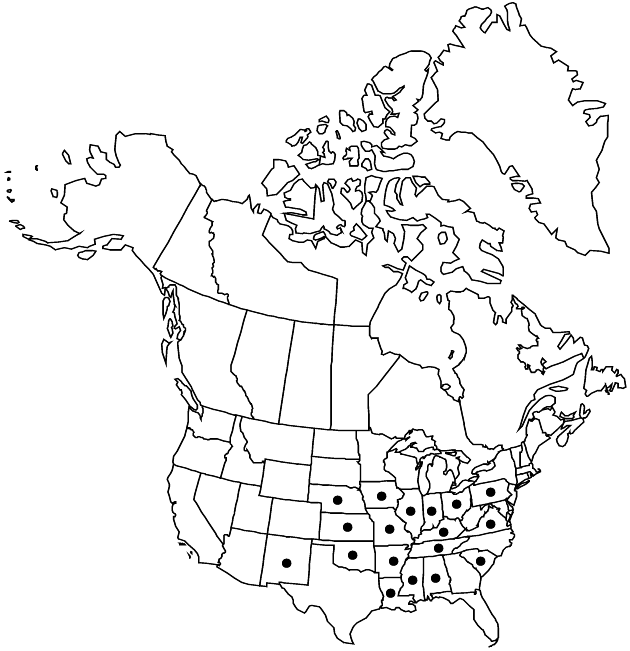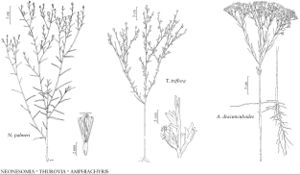Difference between revisions of "Amphiachyris dracunculoides"
Trans. Amer. Philos. Soc., n. s. 7: 313. 1840.
Common names: Prairie broomweed
Basionym: Brachyris dracunculoides de Candolle Mém. Soc. Phys. Genève 7: 265. 1836
Synonyms: Gutierrezia dracunculoides (de Candolle) S. F. Blake Xanthocephalum amoenum var. intermedium Shinners
Treatment appears in FNA Volume 20. Treatment on page 88.
FNA>Volume Importer |
FNA>Volume Importer |
(No difference)
| |
Revision as of 18:41, 24 September 2019
Plants 30–100(–200) cm. Primary stems 0.3–1(–2) mm diam. Leaf blades narrowly to broadly lanceolate, 5–60 × 0.5–6 mm. Heads in crowded corymbiform arrays. Phyllaries 2–3 × 1–2 mm. Receptacles deeply pitted, glabrous. Cypselae 1.2–2.2 mm, 7–9-ribbed, short-setulose. 2n = 10 (rarely 8).
Phenology: Flowering Jul–Nov.
Habitat: Calcareous, clay, or sandy soils, disturbed habitats
Elevation: 0–500 m
Distribution

Ala., Ark., Ill., Ind., Iowa, Kans., Ky., La., Miss., Mo., Nebr., N.Mex., Okla., Ohio, Pa., S.C., Tenn., Va.
Discussion
Amphiachyris dracunculoides is common in the south-central states, often in relatively large populations.
Selected References
None.
Lower Taxa
None.
